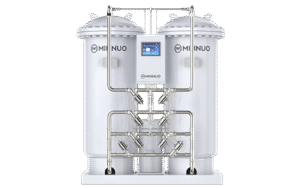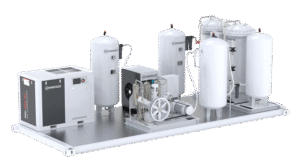As industries expand and production demands grow, the need for reliable, high-volume oxygen supply becomes critical. Traditional sources like cylinder delivery or PSA (Pressure Swing Adsorption) systems often cannot meet the scale or efficiency required. For these cases, VPSA oxygen systems offer a game-changing alternative.
1. What Is VPSA and How Does It Work?
VPSA stands for Vacuum Pressure Swing Adsorption. It builds on PSA principles by introducing vacuum during the desorption phase. This not only improves the recovery rate of oxygen but significantly reduces power consumption.
The VPSA system uses:
Zeolite molecular sieves with high nitrogen affinity
Low-pressure adsorption
Vacuum regeneration to desorb nitrogen from the sieve bed
Twin-tower configuration for continuous operation
This process ensures:
High oxygen output (90% ±2%)
Low energy use per Nm³
Longer molecular sieve lifespan
Minimal maintenance requirements
2. Key Features of VPSA Oxygen Plants
Output: From 1,000 Nm³/h up to 20,000 Nm³/h
Oxygen purity: 90–93%
Energy savings: Up to 30% less than PSA
Control system: Fully automated via PLC or DCS
Modularity: Easily expandable for future demand
3. Who Needs VPSA?
Industries that benefit most from VPSA include:
Steel production
Glass industry
Petrochemical plants
Paper mills
Waste incineration plants
4. Real-World Cost Benefits
For example, a steel plant consuming 6,000 Nm³/h of oxygen could save $150,000–$250,000+ annually by switching from liquid oxygen delivery to VPSA. The typical payback period is 1.5–2.5 years.
5. Conclusion
For facilities needing high-volume, continuous oxygen supply, VPSA offers the most cost-effective and scalable solution.




